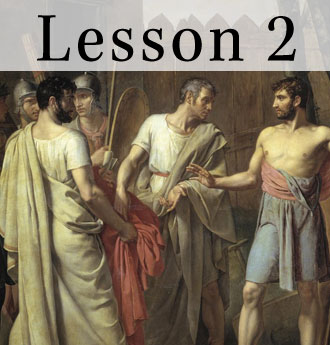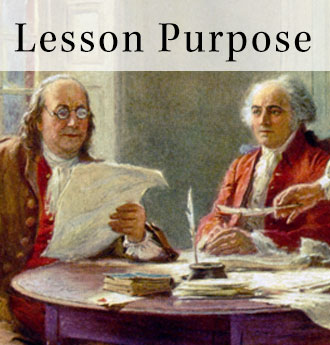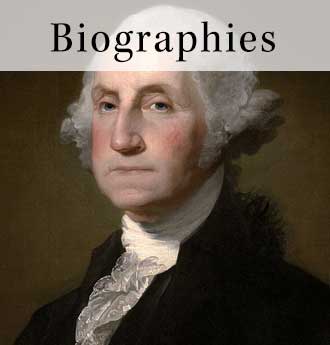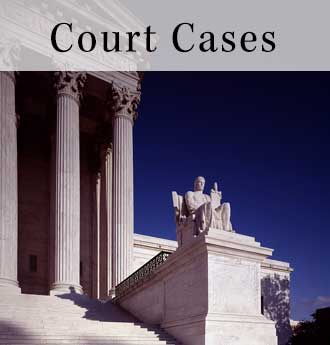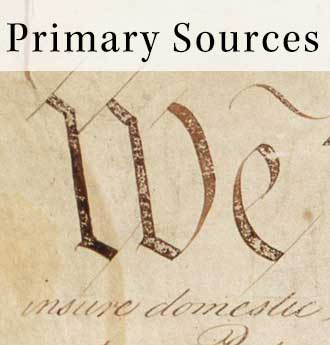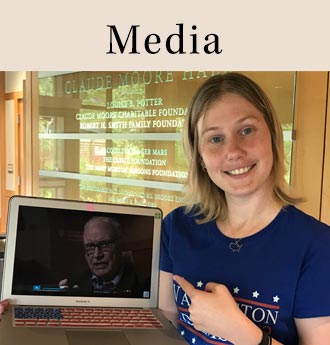Lesson 2: What Ideas about Civic Life Informed the Founding Generation?
The case summaries below were provided by Oyez and licensed under the Creative Commons Attribution-NonCommercial 4.0 International License. Please visit Oyez.org for more case summaries.
Luther v. Borden (1849)
Facts of the case:
In 1841, Rhode Island was still operating under an archaic system of government established by a royal charter of 1663. The charter strictly limited suffrage and made no provision for amendment. Dissident groups, protesting the charter, held a popular convention to draft a new constitution and to elect a governor. The old charter government declared martial law and put down the rebellion, although no federal troops were sent. One of the insurgents, Martin Luther, brought suit claiming the old government was not "a republican form of government" and all its acts were thereby invalid.
Case Question:
Did the Court have the constitutional authority to declare which group constituted the official government of Rhode Island?
Case Conclusion:
No. The Court held that "the power of determining that a state government has been lawfully established" did not belong to federal courts, and that it was not the function of such courts to prescribe the qualifications for voting in the states. The Court held that the creation of republican forms of government and the control of domestic violence were matters of an essentially political nature committed by the Constitution to the other branches of government. Hence, the Court should defer to Congress and the president when confronted with such issues.
Citation:
The Oyez Project, Luther v. Borden, 48 U.S. 1 (1849)
Link to case: https://www.oyez.org/cases/1789-1850/48us1
Schenck v. United States (1919)
Facts of the case:
During World War I, Schenck mailed circulars to draftees. The circulars suggested that the draft was a monstrous wrong motivated by the capitalist system. The circulars urged "Do not submit to intimidation" but advised only peaceful action such as petitioning to repeal the Conscription Act. Schenck was charged with conspiracy to violate the Espionage Act by attempting to cause insubordination in the military and to obstruct recruitment.
Case Question:
Are Schenck's actions (words, expression) protected by the free speech clause of the First Amendment?
Case Conclusion:
Holmes, speaking for a unanimous Court, concluded that Schenck is not protected in this situation. The character of every act depends on the circumstances. "The question in every case is whether the words used are used in such circumstances and are of such a nature as to create a clear and present danger that they will bring about the substantive evils that Congress has a right to prevent." During wartime, utterances tolerable in peacetime can be punished. The clear and present danger test established in Schenck would later be modified in Brandenburg v. Ohio (1969) as the imminent lawless action test.
Citation:
The Oyez Project, Schenck v. United States, 249 U.S. 47 (1919)
Link to case: http://oyez.org/cases/1901-1939/1918/1918_437
Minersville v. Gobitis (1940)
Facts of the case:
Lillian and William Gobitis were expelled from the public schools of Minersville, Pennsylvania, for refusing to salute the flag as part of a daily school exercise. The Gobitis children were Jehovah's Witnesses; they believed that such a gesture of respect for the flag was forbidden by Biblical commands.
Case Question:
Did the mandatory flag salute infringe upon liberties protected by the First and Fourteenth Amendments?
Case Conclusion:
No. In an 8-to-1 decision, the Court declined to make itself "the school board for the country" and upheld the mandatory flag salute. The Court held that the state's interest in "national cohesion" was "inferior to none in the hierarchy of legal values" and that national unity was "the basis of national security." The flag, the Court found, was an important symbol of national unity and could be a part of legislative initiatives designed "to promote in the minds of children who attend the common schools an attachment to the institutions of their country." This decision was overturned in West Virginia State Board of Education v. Barnette (1943).
Citation:
The Oyez Project, Minersville School District v. Gobitis, 310 U.S. 586 (1940)
Link to case: https://www.oyez.org/cases/1940-1955/310us586
Baker v. Carr (1962)
Facts of the case:
Charles W. Baker and other Tennessee citizens alleged that a 1901 law designed to apportion the seats for the state's general assembly was virtually ignored. Baker's suit detailed how Tennessee's reapportionment efforts ignored significant economic growth and population shifts within the state.
Case Question:
Did the Supreme Court have jurisdiction over questions of legislative apportionment?
Case Conclusion:
Yes. In an opinion which explored the nature of "political questions" and the appropriateness of Court action in them, the Court held that there were no such questions to be answered in this case and that legislative apportionment was a justiciable issue. In his opinion, Justice Brennan provided past examples in which the Court had intervened to correct constitutional violations in matters pertaining to state administration and the officers through whom state affairs are conducted. Brennan concluded that the Fourteenth Amendment equal protection issues which Baker and others raised in this case merited judicial evaluation.
Citation:
The Oyez Project, Baker v. Carr, 369 U.S. 186 (1962)
Link to case: http://oyez.org/cases/1960-1969/1960/1960_6
Wisconsin v. Yoder (1972)
Facts of the case:
Jonas Yoder and Wallace Miller, both members of the Old Order Amish religion, and Adin Yutzy, a member of the Conservative Amish Mennonite Church, were prosecuted under a Wisconsin law that required all children to attend public schools until age 16. The three parents refused to send their children to such schools after the eighth grade, arguing that high school attendance was contrary to their religious beliefs.
Case Question:
Did Wisconsin's requirement that all parents send their children to school at least until age 16 violate the First Amendment by criminalizing the conduct of parents who refused to send their children to school for religious reasons?
Case Conclusion:
In a unanimous decision, the Court held that individual's interests in the free exercise of religion under the First Amendment outweighed the state's interests in compelling school attendance beyond the eighth grade. In the majority opinion by Chief Justice Warren E. Burger, the Court found that the values and programs of secondary school were "in sharp conflict with the fundamental mode of life mandated by the Amish religion," and that an additional one or two years of high school would not produce the benefits of public education cited by Wisconsin to justify the law. Justice William O. Douglas filed a partial dissent but joined with the majority regarding Yoder.
Citation:
The Oyez Project, Wisconsin v. Yoder, 406 U.S. 205 (1972)
Link to case: http://oyez.org/cases/1970-1979/1971/1971_70_110
Hawaii Housing Authority v. Midkiff (1984)
Facts of the case:
After extensive hearings in the mid-1960s, the Hawaii legislature discovered that while federal and state governments owned nearly 49 percent of the land in Hawaii, another 47 percent was owned by only 72 private landowners. To combat this concentration of ownership, the legislature enacted the Land Reform Act of 1967. The Act adopted a method of redistribution in which title in real property could be taken from lessors and transferred to lessees. Frank E. Midkiff, a landholder, challenged the act.
Case Question:
Did the Land Reform Act of 1967 violate the public use clause of the Fifth Amendment?
Case Conclusion:
No. In a unanimous decision, the Court held that the Public Use Clause did not preclude Hawaii from taking title in real property, with just compensation, for the purpose of reducing the concentration of ownership. Noting that Hawaii's statute was rationally related to a conceivable public purpose, the Court argued that "debates over the wisdom of takings" were best carried out by legislatures, not by federal courts. The Court also held that the fact that the property taken by eminent domain was transferred to private beneficiaries did not condemn the law to having a solely private purpose.
Citation:
The Oyez Project, Hawaii Housing Authority v. Midkiff, 467 U.S. 229 (1984)
Link to case: http://oyez.org/cases/1980-1989/1983/1983_83_141
Texas v. Johnson (1989)
Facts of the case:
In 1984, in front of the Dallas City Hall, Gregory Lee Johnson burned an American flag as a means of protest against Reagan administration policies. Johnson was tried and convicted under a Texas law outlawing flag desecration. He was sentenced to one year in jail and assessed a $2,000 fine. After the Texas Court of Criminal Appeals reversed the conviction, the case went to the Supreme Court.
Case Question:
Is the desecration of an American flag, by burning or otherwise, a form of speech that is protected under the First Amendment?
Case Conclusion:
In a 5-to-4 decision, the Court held that Johnson's burning of a flag was protected expression under the First Amendment. The Court found that Johnson's actions fell into the category of expressive conduct and had a distinctively political nature. The fact that an audience takes offense to certain ideas or expression, the Court found, does not justify prohibitions of speech. The Court also held that state officials did not have the authority to designate symbols to be used to communicate only limited sets of messages, noting that "if there is a bedrock principle underlying the First Amendment, it is that the Government may not prohibit the expression of an idea simply because society finds the idea itself offensive or disagreeable."
Citation:
The Oyez Project, Texas v. Johnson, 491 U.S. 397 (1989)
Link to case: http://oyez.org/cases/1980-1989/1988/1988_88_155
Bush v. Gore (2000)
Facts of the case:
Following the Supreme Court's decision in Bush v. Palm Beach County Canvassing Board, and concurrent with Vice President Al Gore's contest of the certification of Florida presidential election results, on December 8, 2000 the Florida Supreme Court ordered that the Circuit Court in Leon County tabulate by hand 9,000 contested ballots from Miami-Dade County. It also ordered that every county in Florida must immediately begin manually recounting all "under-votes" (ballots which did not indicate a vote for president) because there were enough contested ballots to place the outcome of the election in doubt. Texas Governor George Bush and his running mate, Richard Cheney, filed a request for review in the U.S. Supreme Court and sought an emergency petition for a stay of the Florida Supreme Court's decision. The U.S. Supreme Court granted review and issued the stay on December 9. It heard oral arguments two days later.
Case Question:
Did the Florida Supreme Court violate Article II, Section 1, Clause 2 of the Constitution by making new election law? Do standardless manual recounts violate the Equal Protection and Due Process Clauses?
Case Conclusion:
Noting that the Equal Protection Clause guarantees individuals that their ballots cannot be devalued by "later arbitrary and disparate treatment," the unsigned opinion issued on behalf of the entire Court held 7-2 that the Florida Supreme Court's scheme for recounting ballots was unconstitutional. Even if the recount were fair in theory, it was unfair in practice. The record suggested that different standards were applied from ballot to ballot, precinct to precinct, and county to county. Because of those and other procedural difficulties, the court held that no constitutional recount could be fashioned in the time remaining (which was short because the Florida legislature wanted to take advantage of the "safe harbor" provided by 3 U.S.C. Sec. 5). Loath to make broad precedents, the opinion limited its holding to the present case. Rehnquist (in a concurring opinion joined by Scalia and Thomas) argued that the recount scheme was also unconstitutional because the Florida Supreme Court's decision made new election law, which only the state legislature may do. Breyer and Souter (writing separately) agreed with the Court's holding that the Florida supreme court's recount scheme violated the Equal Protection Clause, but they dissented with respect to the remedy, believing that a constitutional recount could be fashioned. Time is insubstantial when constitutional rights are at stake. Ginsburg and Stevens (writing separately) argued that for reasons of federalism, the Florida supreme court's decision ought to be respected. Moreover, the Florida decision was fundamentally right; the Constitution requires that every vote be counted.
Citation:
The Oyez Project, Bush v. Gore, 531 U.S. 98 (2000)
Link to case: http://oyez.org/cases/2000-2009/2000/2000_00_949
Kelo v. City of New London (2005)
Facts of the case:
New London, a city in Connecticut, used its eminent domain authority to seize private property to sell to private developers. The city said developing the land would create jobs and increase tax revenues. Kelo Susette and others whose property were seized sued New London in state court. The property owners argued the city violated the Fifth Amendment's takings clause, which guaranteed the government will not take private property for public use without just compensation. Specifically the property owners argued taking private property to sell to private developers was not public use. The Connecticut Supreme Court ruled for New London.
Case Question:
Does a city violate the Fifth Amendment's takings clause if the city takes private property and sells it for private development, with the hopes the development will help the city's bad economy?
Case Conclusion:
No. In a 5-4 opinion delivered by Justice John Paul Stevens, the majority held that the city's taking of private property to sell for private development qualified as a "public use" within the meaning of the takings clause. The city was not taking the land simply to benefit a certain group of private individuals, but was following an economic development plan. Such justifications for land takings, the majority argued, should be given deference. The takings here qualified as "public use" despite the fact that the land was not going to be used by the public. The Fifth Amendment did not require "literal" public use, the majority said, but the "broader and more natural interpretation of public use as 'public purpose.'"
Citation:
The Oyez Project, Kelo v. City of New London, 545 U.S. ___ (2005)
Link to case: http://oyez.org/cases/2000-2009/2004/2004_04_108
